A successfully designed garden is one that reflects both the spirit and the needs of its owner. Some of us are artists, using plants, boulders and bed lines to paint pictures of ourselves and how we perceive the world. Many of us are collectors, showing off our treasures that have to be the latest and the greatest. A few of us are philosophers, an introspective, deep-thinking breed that values a garden of solitude and reflection. Perhaps you have a reflective or introspective side that influences how you perceive the world, and you desire to build a garden that tells that story. Or perhaps you have a philosopher friend with a garden that just doesn’t make sense to you, and you’re seeking to understand.
Whether the style of the philosopher’s garden is contemporary, Asian or rustic, the design principles and goals are amazingly similar. Could it be that the needs and aesthetics of philosophers are the same, regardless of individual background? Frequently these gardens are paradoxical, very complex in design but deceptively simple in appearance.
Let’s take a look at how to design and construct a garden that satisfies the spirit of the philosopher.
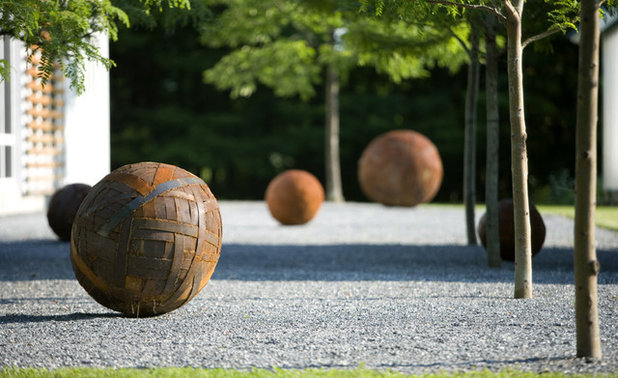
Wagner Hodgson
Shapes. The philosopher is keenly aware of shapes and how different ones direct and encourage thought. Spheres, for example, universally symbolize completion, perfection and equality. Notice how the spheres in this contemporary garden are endowed with an interesting texture; also notice how their placement creates a sense of peace and introspection. If they had been crowded together underneath a shrub instead, the feeling would have been entirely different. For the philosopher, placement that emphasizes form and allows each component to stand on its own is of primary importance.
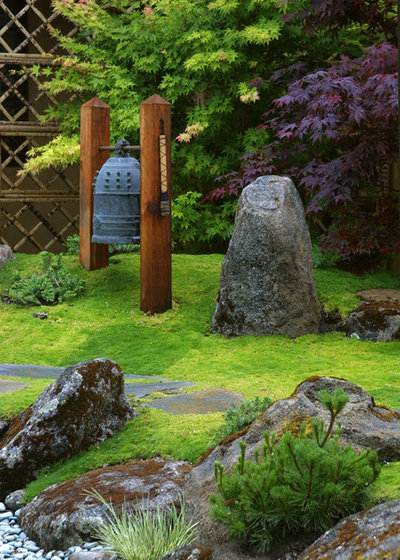
Margie Grace - Grace Design Associates
This Asian garden has a completely different look than the previous contemporary garden. You will notice, however, that the feel of this garden and your emotional response to it are likely amazingly similar to those with the previous garden. The reasons for this are that emphasis has been placed on the intrinsic value of the objects and that the placement of the objects is quite similar. Both gardens speak of boldness, simplicity and tranquility.
As a garden designer, I have had clients initially convey their desire for an Asian garden. During our discussions I have helped them discover that what they really wanted was a garden that was tranquil, relaxing and thought provoking. They assumed that these characteristics mandated one style of garden design. The truth is that a purposefully designed space can meet these needs regardless of style. One such client now boasts that he has a Zen Southern plantation garden.
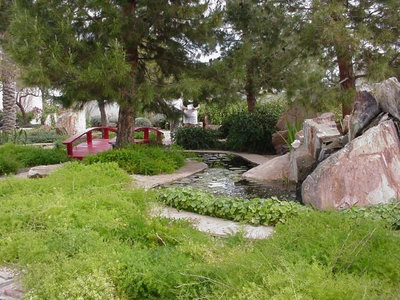
Greg Trutza
Balance. The philosopher places importance on balance in the garden. It eliminates any sense of cognitive dissonance and creates a peaceful vibe.
Typically asymmetrical balance, as shown here, appeals more to the philosopher than formal or symmetrical balance. Asymmetrical balance simply means that the visual weight of the components appears to be equal, not that both sides are mirror images. Asymmetrical balance tends to inspire more thought, while formal balance does the work for you.
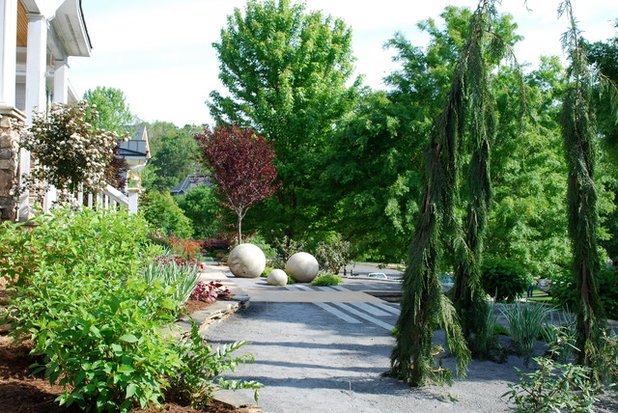
Jay Sifford Garden Design
Substrate. Every garden has a floor. The philosopher generally prefers a substrate that is simple, uniform and monochromatic, one that will show off plants and objects to their best advantage. Gravel, crushed stone and sand are popular choices.
If the garden shown here had turf rather than crushed stone for flooring, the feeling would have been altogether different. The perceived value of the objects and plants would have been undermined and diminished.
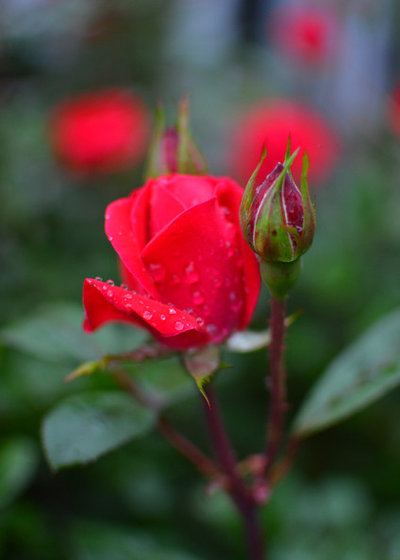
Amy Renea
Flowers. The garden of the philosopher generally contains few, if any, flowers. In fact, the philosopher may consider a plethora of flowers to be eye candy, a decoy that prevents the eye from seeing the true beauty of the garden. Instead, the philosopher will opt for form and foliage.
However, a well-placed flowering shrub may be employed to initiate thought. Notice how the rosebush in this photo — with flowers in various stages of development, unfolding petals and water droplets — inspires thought in a way that a sea of petunias can’t.

Huettl Landscape Architecture
Texture. In lieu of flowers, plants with unique textures, such as this Whiteleaf manzanita (
Arctostaphylos manzanita, zones 8 to 10) may draw the eye of the philosopher. The exfoliating bark and subtle shades of brown both calm and engage the mind.
Conifers, maples and ornamental grasses will also find their way into the garden of the philosopher because of their unique form and textures.
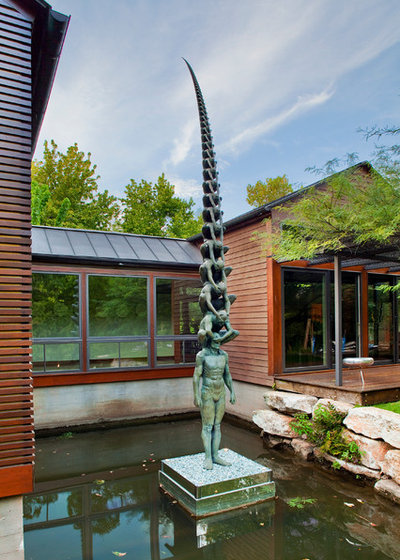
Fine Focus Photography
Art. The philosopher will most likely be drawn to garden art that inspires thought and repeats elements of form, color and texture found elsewhere in the garden. Unique sculptures, such as this piece, will generally be preferred over multitiered formal fountains, trees of wine bottles or brightly colored contemporary art.
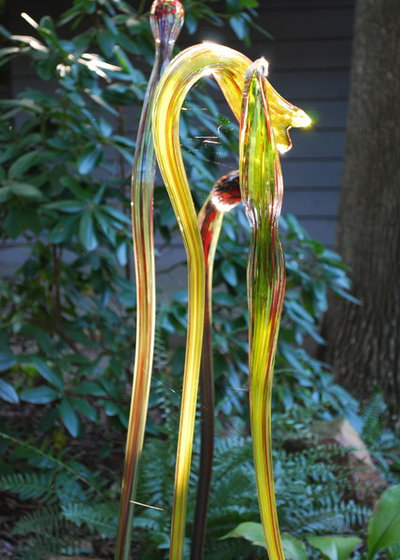
Jay Sifford Garden Design
Glass art is another choice for the philosopher’s garden. Notice how this installation has a mesmerizing quality in that it both reflects and absorbs light.
When choosing glass art for the garden, be mindful of the fact that falling branches and hailstorms can cause significant damage.
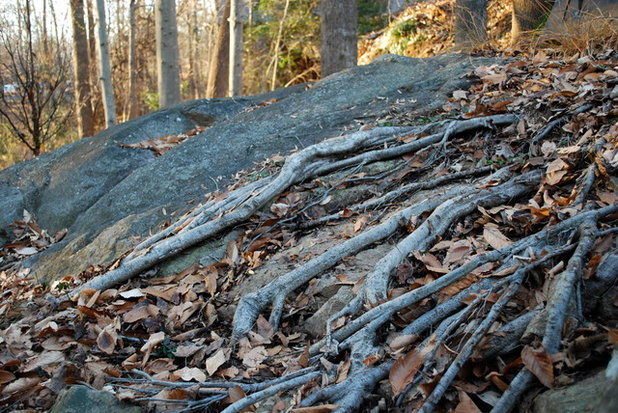
Jay Sifford Garden Design
Paradox. The philosopher may seek to highlight natural elements in the garden that exhibit contrast or illustrate universal truths. Shown here is a portion of my meditation garden. I unearthed some beech tree roots that had grown over a very large boulder in a futile attempt to anchor the tree in the soil. This sculptural vignette spoke to me, telling a story of strength and conflict with eventual resolution and peaceful coexistence. It is a lesson I need to recall on a daily basis.
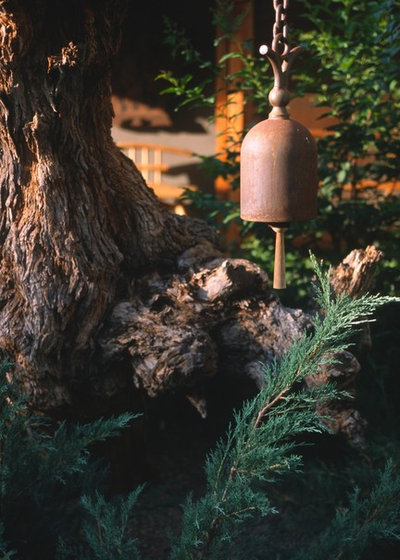
Stonecreek Building Company, Inc.
Sound. The philosopher welcomes simple, soulful sound in the garden. This additional layer of depth is often overlooked.
Bells, wind chimes, water features and ornamental grasses all introduce unique and subtle sounds into the garden.
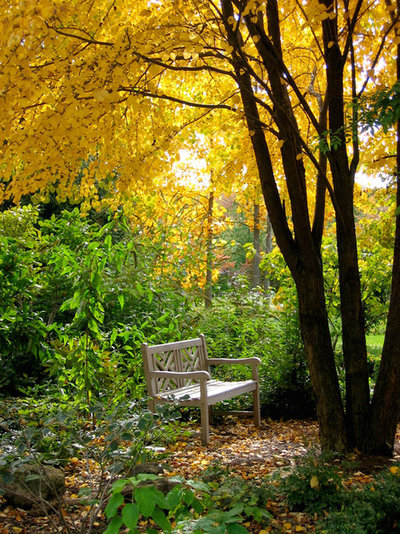
Enroot Landscape Planning and Design
Seating. Every garden needs seating. The philosopher carefully positions benches to take advantage of a thought-provoking vignette or to catch the light at a certain time of day.
My garden sports a flat boulder at the top of a waterfall that I call my wine rock. I sit there in the afternoon, feeding the koi while drinking a glass of wine.
Such is the garden of the philosopher.
More: What Kind of Gardener Are You? Find Your Archetype





